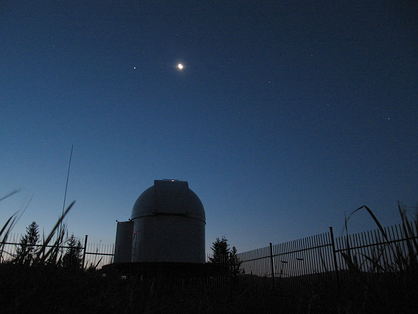Mount Suhora Astronomical Observatory

Moon and Jupiter over the small dome
› Binoculars to boost your night-sky viewing
› Lyra’s stunning smoke ring – M57
› Is the Hubble Tension Resolved?
› Universe’s end – sooner rather than later
› Caught in the current of the wonderful Whirlpool
› A faint star will reveal itself as it throws a hissy-fit
› Saturn’s Rings to “Disappear”
› The Lithium Problem
› Discover the many fascinating moons of our Solar System
› A bigger and better helicopter to Mars






